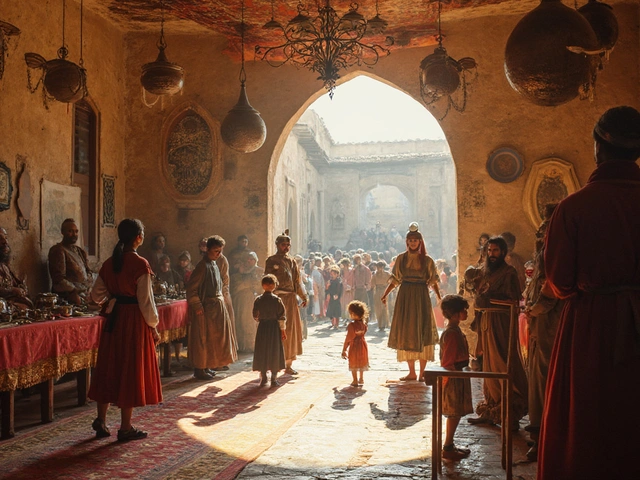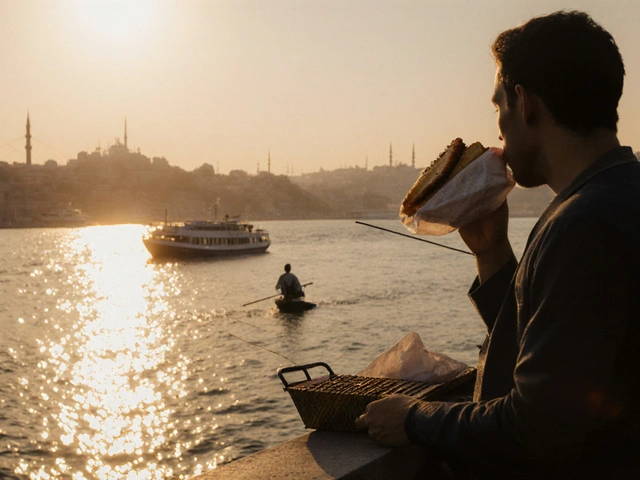Maiden's Tower: History, Legends, and How to Experience It in Istanbul
Explore Istanbul's Maiden's Tower, its rich history, legends, and practical tips for locals and visitors to enjoy stunning Bosphorus views and nearby attractions.
When working with Bosphorus history, the recorded past of the waterway that separates Europe and Asia in Istanbul. Also known as the Bosphorus legacy, it has driven settlement patterns, military strategy, and everyday life for millennia.
The first name most visitors hear is the Bosphorus Strait, the narrow, 30‑kilometer channel linking the Black Sea to the Sea of Marmara. Its currents have been a natural highway for merchants, pirates, and naval fleets since antiquity. The strait’s strategic value attracted the Byzantine Empire, which erected massive stone forts—Rumeli Hisarı on the European shore and Anadolu Hisarı on the Asian side—to control ship passage. Those fortifications showcase how geography forced political innovation.
Later, the Ottoman Empire, the centuries‑long power that unified the region under a single rule built on the Bosphorus’s importance. Ottoman engineers commissioned the first permanent bridges, beginning with the 15 July Martyrs Bridge (formerly Bosphorus Bridge) in 1973, followed by the Fatih Sultan Mehmet Bridge. Those structures turned the waterway from a barrier into a connector, enabling modern road traffic while preserving centuries‑old maritime routes.
Understanding Bosphorus history requires looking at its role in trade, warfare, and culture. The strait carried silk, spices, and later oil, shaping Istanbul’s markets and cuisine. Naval battles—like the 1453 siege that saw Ottoman cannons roar across the water—demonstrate how control of the Bosphorus could decide empires. Meanwhile, poets and painters fell in love with its sunset silhouettes, weaving the strait into Turkish art and literature.
Today, the Bosphorus still influences daily life. Ferries shuttle commuters, waterfront restaurants serve fresh fish, and historic mansions (yalis) line the banks, each a reminder of past owners—sultans, merchants, diplomats. The blend of ancient stone, modern steel, and living culture makes the Bosphorus a living museum. If you’re curious about how this waterway shaped the city’s skyline, its neighborhoods, and even its culinary traditions, you’re in the right place.
Below you’ll find a curated collection of articles that unpack specific chapters of Bosphorus history. From the Byzantine forts that first guarded the strait to the Ottoman bridges that rewrote its connectivity, each piece adds a layer to the story. Dive in to see how geography, power, and people have woven a narrative that still flows through Istanbul’s heart.
Explore Istanbul's Maiden's Tower, its rich history, legends, and practical tips for locals and visitors to enjoy stunning Bosphorus views and nearby attractions.
Explore the legends of Istanbul's Maiden's Tower, from ancient snake myths to romantic love stories, with local insights, visiting tips, and preservation updates.

Traveling with a buddy does more than split the bill – it can totally transform the way you experience the world. From safety to making epic memories, everything changes when two people share the road. This article covers the true perks of having a travel sidekick, what to look for in a good travel buddy, and practical tips for finding one that matches your vibe. If you’ve ever wondered whether to go solo or find a partner in adventure, here’s what you need to know. Get ready for insights that may just persuade you to pack an extra pair of sunglasses.

This article dives into popular museums that don't just display history—they bring it to life with historical reenactments. Want to know which places offer the best interactive experiences? We break down what makes these museums unique, what you can expect, and share tips for getting the most out of your visit. Get the scoop on ticket prices, what to watch for, and how to pick the right living history adventure for you and your family. Readers will walk away ready to step straight into the past.

Explore Istanbul’s hands-on museums, science centers, Turkish art spaces, and outdoor cultural spots that turn family time into an engaging journey of learning and growth for all ages.

Learn how to master Masquerade Club Photography in Istanbul, from gear and settings to top venues, lighting tricks, and post‑processing tips.

Discover the real fun in Istanbul beyond the tourist spots - from hidden hammams and midnight kebabs to rooftop tea and island escapes. These are the experiences locals love.